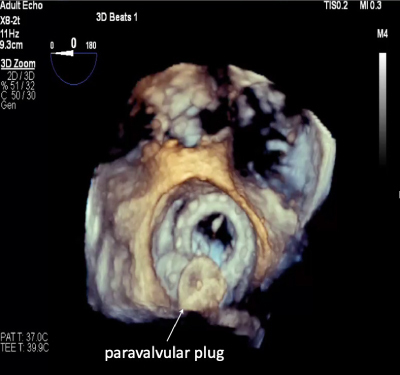Procedures
Paravalvular Leak Closure (PVL)
Paravalvular leak (PVL) closure is a specialized minimally invasive heart intervention procedure to treat paravalvular leaks, which are small gaps between the heart’s tissue and the replacement valve after a heart valve replacement. The leaks can cause significant symptoms such as shortness of breath, fatigue, and heart failure.

Call for Appointment
(02) 9646 4044
Procedures Expertise
Coronary Angiography & Stenting
Electrophysiology Study and Catheter Ablation
Everything you need to know about
Paravalvular Leak Closure (PVL)
What are the symptoms of paravalvular leak?
The symptoms of a paravalvular leak can vary depending on the severity of the leak. Some patients may experience shortness of breath, fatigue, or heart failure.
What causes a paravalvular leak?
Paravalvular leak is often caused by a poorly fitting prosthetic heart valve. Over time, the valve can shift slightly, creating a gap between the valve and the surrounding tissue that allows blood to leak out.
How is paravalvular leak closure performed?
Paravalvular leak closure is typically performed using a minimally invasive approach. During the procedure, a catheter is inserted into a blood vessel in the groin and guided to the site of the leak. A closure device is then inserted through the catheter and positioned around the leak, sealing it off and preventing further leak.
How long does it take for a paravalvular leak closure procedure?
Most paravalvular leak closure procedures take two to three hours.
What preparation is required for paravalvular leak closure procedure?
Before the procedure, you will need to undergo a comprehensive medical evaluation to assess your overall health and any potential risks associated with the procedure. This may include blood tests, imaging studies, and a thorough physical exam.
You may be advised to stop taking certain medications before the procedure, such as blood thinners or anti-inflammatory drugs, to reduce the risk of bleeding.
You will have to fast for several hours before the procedure, typically starting at midnight the night before. This is to ensure that your stomach is empty and reduce the risk of complications during the procedure.
PVL closure is usually performed under general anaesthesia, which means you will be asleep during the procedure. You will need to follow specific instructions regarding fasting and medication use before the anaesthesia.
Our team will guide you through everything you need to prepare for the procedure.
What is the recovery process like after paravalvular leak closure?
Most patients are able to return to normal activities within a few days of the procedure. However, strenuous exercise and heavy lifting should be avoided for several weeks. Our team will provide a detailed post-care plan for faster, safe recovery and long-term well-being.
Call for Appointment
(02) 9646 4044
Procedures Expertise
Coronary Angiography & Stenting
Electrophysiology Study and Catheter Ablation
Structural Heart Intervention Procedures
Transcatheter Aortic Valve Implantation (TAVI) | Balloon Mitral Valvuloplasty | PFO Closure | Left Atrial Appendage Closure (LAAC) | Renal Artery Denervation (RDN)
Book an Appointment
Call for appointment/GP referral
(02) 9646 4044
